Menu
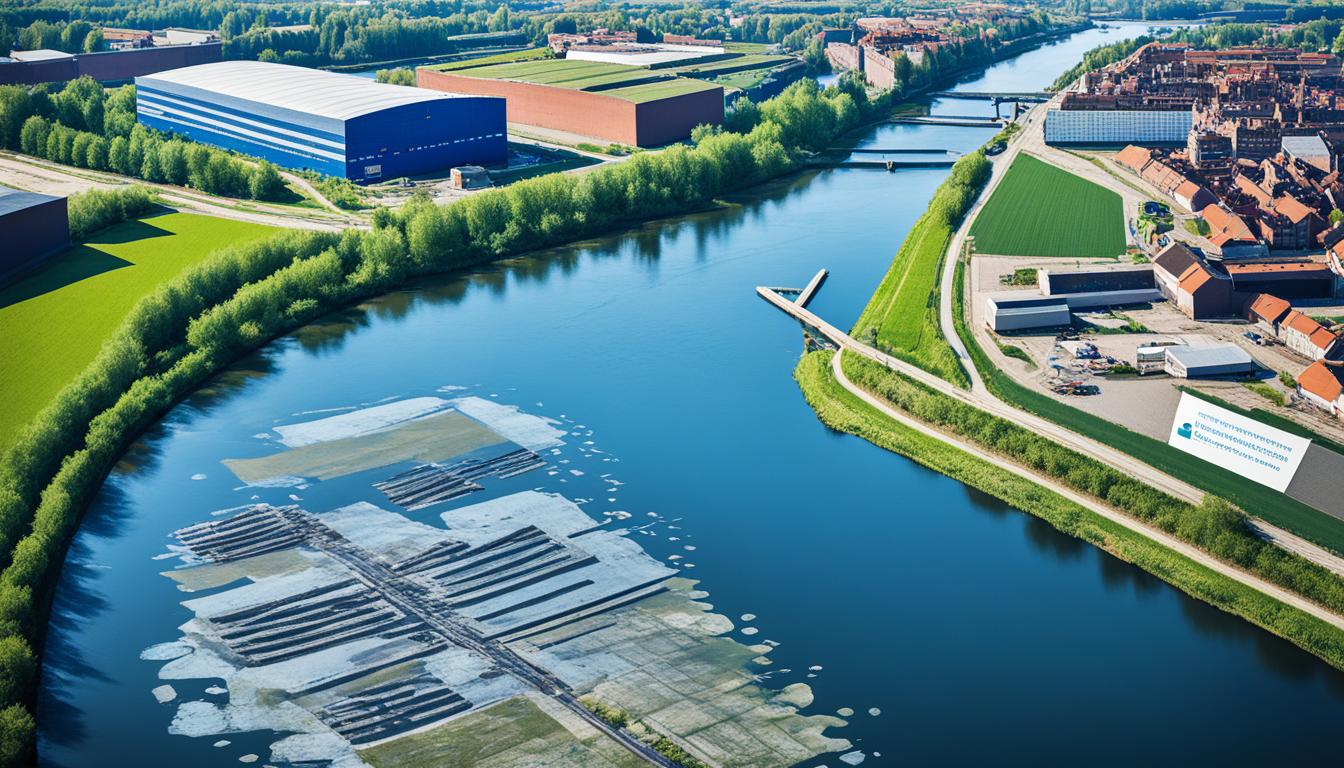
Did you know that every six years, the EU updates the list of what to watch out for in its surface waters? This shows how the EU Water Framework Directive keeps on top of things. It’s a key element in looking after our environment in Europe, especially when it comes to making water management sustainable.
The EU’s goals for managing water are big. Backed by the Groundwater Directive and Environmental Quality Standards Directive, the WFD aims to keep Europe’s freshwater clean and safe. It’s all about making sure our water is in a good state, both for the environment and for people.
Every so often, countries must check on specific substances and pollution in their waters. But, the checks in 2019 found some areas where more effort is needed. We need more money, better ways to do things, controlling chemical pollution, and working together better. This will help us reach the aims of the EU’s laws that protect our environment.
The EU Water Framework Directive (WFD) is a key part of the EU’s plan to protect the environment. It aims to keep our water clean and manage it wisely. By 2027, each EU country must make sure their rivers, lakes, and other waterways are in good condition.
The WFD focuses on managing entire river basins, bringing together different countries to work on their shared waters. Every six years, these countries look at how they’re doing with their water management. They cover a total of 180 river basins in their plans.
For surface water to be clean, countries must keep an eye on certain chemicals listed in the WFD. This list of chemicals is reviewed every six years. On top of this, the WFD asks for standards to be set for chemicals that might harm our waters.
In 2019, a report said EU water laws have helped keep our waters safer and manage flooding better. But, it also pointed out a few things that need to get better. These include more money, better planning, working well with other EU rules, fighting chemical pollution, and using technology better.
In 2022, the EU suggested updating the list of harmful chemicals. If this happens, countries might need to do more to keep their waters clean. With better ways to check water quality, the EU is focused on improving over 146,500 lakes and rivers and 15,000 places where we get our drinking water.
The Water Framework Directive (WFD) aims to reach good status for all water bodies in the EU by 2027. It focuses on both the health of ecosystems and chemical conditions. This means a full-scale strategy for managing European water quality. It needs all EU countries to check and watch water bodies closely.
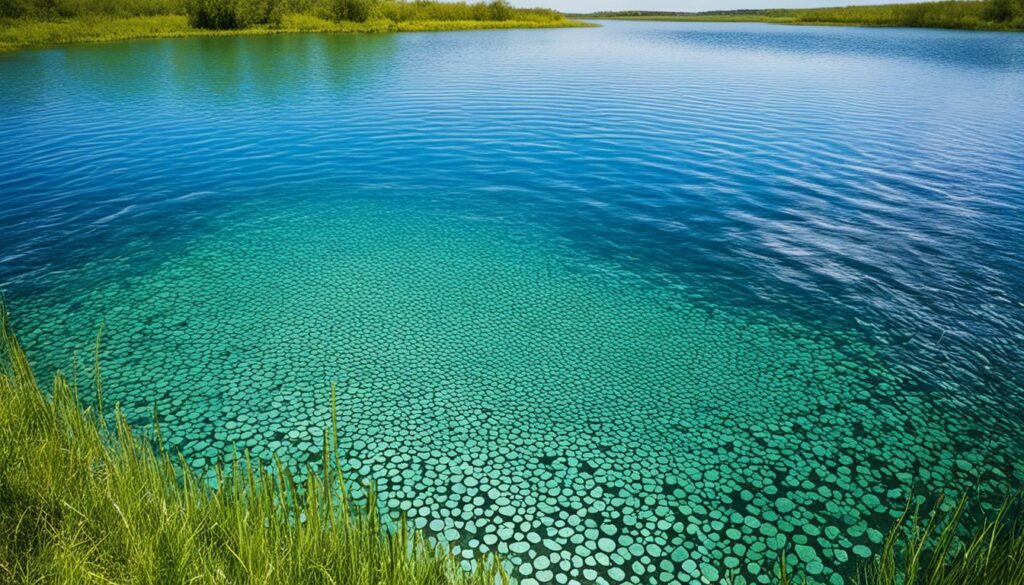
The WFD focuses on River Basin Management. It connects eco-goals with how people use the environment. Countries must report often on River Basin Management Plans (RBMPs). They show how well surface waters and groundwater are doing. The latest round of reports is from 2016, and new ones are coming in 2022. This keeps efforts going to make water better.
The WFD asks for in-depth checks using different criteria:
So far, more than 146,500 surface water and 15,000 groundwater bodies have been inspected across the EU and Norway. This wide view shows the Directive is serious about protecting European water quality. It also sets up different rankings for water areas, from the best (Good) to the worst (Bad).
| Parameter | Assessment Criteria |
|---|---|
| Ecological Status of Surface Waters | Phytoplankton, Macrophytes, Phytobenthos, Benthic invertebrate fauna, Fish health |
| Chemical Status of Surface Waters | Compliance with Environmental Quality Standards Directive |
| Chemical Status of Groundwaters | Meeting concentrations standards for specific substances |
| Quantitative Status of Groundwaters | Sustaining resources, preventing ecological intrusions |
This detailed method ensures the WFD’s goals and EU-wide efforts gradually make water bodies better. The EU’s diligent approach is key to reaching good water status across its area.
Water quality standards are key for keeping our water bodies healthy. In Europe, the Environmental Quality Standards (EQS) are very important. They control how much pollution is allowed in the water. This helps make sure our water is safe for plants and animals.
EQS sets limits for certain pollutants in our waters. The Water Framework Directive (WFD) uses these to check if our water is in good condition. Every six years, countries must update which pollutants are the most important. This keeps the standards up to date with new environmental problems.
Assessing water quality and ecological status is a big task. The WFD requires thorough checks. These checks look not just at pollution but also at how our actions and climate change affect the water. The European Surface Water Standards set goals for these checks. They help countries measure and report the condition of their waters fairly.
The WFD includes regular checks and updates to make sure water stays clean. The latest changes in October 2022 are a sign of the EU’s ongoing work. The EU is dedicated to improve how we control pollution. They want to make our water bodies even better for nature.
The Sustainable water management model, as set out by the Water Framework Directive, hinges on the effective RBMP design and implementation. Each River Basin Management Plan is crucial for overseeing European river basin regulation. It ensures there are solid plans in place to tackle old and new issues in water management.
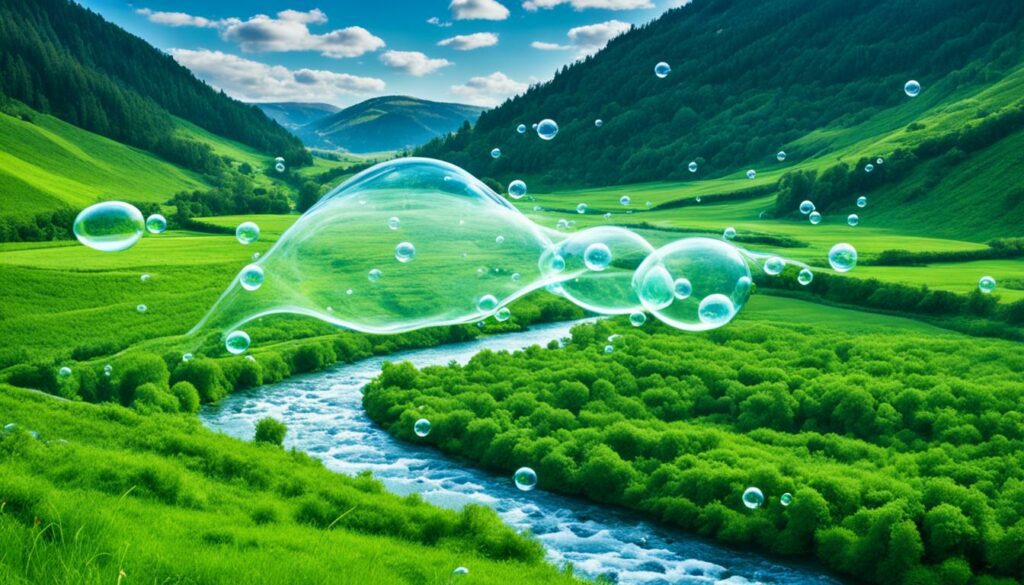
RBMPs bring different water policies on various levels together. This means that local, national, and EU goals align. With this close connection, work to include water bodies meets ecological and chemical standards. These are key in keeping water safe and improving its quality.
WRc has played a big role in helping the European Commission with these policies. It has given its technical know-how and carefully reviewed the rules over the last 15 years. Their work, like in picking out Nitrate Vulnerable Zones (NVZs) in England and Wales, shows how they use smart and evidence-based moves in RBMP design and implementation.
| Review | Directive | Findings |
|---|---|---|
| 2019 Fitness Check | Water Framework Directive | Broadly fit for purpose, enhanced protection for water bodies |
| October 2022 Proposal | Updates for surface and groundwater pollutants | New measures for pollutant quality standards and frequent monitoring data collection |
The regular checking of priority substances, as the Groundwater Directive commands, keeps the plans up-to-date. This makes sure they still meet today’s needs for the environment. Talks to improve water laws again show how important RBMPs are for better sustainable water management in Europe.
Groundwater is key, supplying 65% of our drinking water. It keeps 75% of Europeans hydrated too. Covering over 95% of the world’s freshwater, it’s vital to protect it. The EU Water Framework Directive (WFD) and Groundwater Directive (GWD) are crucial in this effort. They focus on safeguarding *groundwater* and meeting set objectives. Groundwater is marked ‘Good’ or ‘Poor’ under the WFD. The GWD makes sure we track groundwater quality closely and control pollution.
The Groundwater Directive (GWD) guides the *groundwater protection* strategy of the WFD. It details the need to check *groundwater quality* regularly. This covers monitoring levels of nutrients, heavy metals, and chemicals like plant protection products. These checks help keep our water safe from pollutions. They are carried out through River Basin Management Plans (RBMPs). These plans are put in place over different periods. They help ensure our water continues to improve.
The GWD focuses on *groundwater quality monitoring* to keep our water clean. It tracks status and pollution levels across 12,000 groundwater areas. This monitoring is vital for meeting WFD goals. The data helps develop anti-pollution strategies. It also supports the overall management of *water quality* in river basins. The WFD aims to have all water sources at ‘Good Status’ by 2027.
The Water Framework Directive (WFD) is deeply committed to merging green practices with water use. It promotes the use of eco-friendly approaches alongside traditional methods. This way, it tries to meet the needs of the planet, the economy, and people.To do this, it’s important to find ways that benefit everyone. This might mean finding new, better ways to use water.

Using sustainable methods is key to reaching the WFD’s development goals. The guidance in River Basin Management Plans (RBMPs) helps member states. They suggest ways to use, share, and save water wisely.These plans focus on things like smart pricing, actions that don’t involve money, and new technologies. All of these help in the sustainable use of water.
Protecting the freshwater ecosystem from human harm is at the heart of the WFD. It sets tough rules that members must follow to keep water clean.By watching closely and checking things often, they aim to keep the water healthy. This strong focus on caring for the environment is vital. It ensures that being green is a big part of managing water well, helping europe’s freshwater survive.
| Directive | Focus | Review Frequency |
|---|---|---|
| Water Framework Directive | Surface waters & priority substances | 6 years |
| Groundwater Directive | Groundwater pollutants | 6 years |
A big evaluation in December 2019 looked at the Water Framework Directive. It found that our current laws on water are mostly working well. There have been great improvements in protecting water and managing floods better.
The Water Framework Directive says we must check and update the list of substances in water every six years. The goal is to make sure that water quality is good. This happens through the work of the Environmental Quality Standards Directive.
The Groundwater Directive is also key in this. It focuses on the chemical condition of our underground water. It makes sure EU countries regularly check on harmful substances. This check is very important for keeping our waters safe for the long term.
There are new ideas for making water laws better. These changes would mean updating lists of harmful substances in water. EU countries will need to do certain things to meet these new standards. This is crucial for improving water quality. The aim is to reach all the directive’s goals by 2027.
More than 146,500 areas of surface water and 15,000 groundwater sites fall under this directive in the EU and Norway. It shows how important its reach is. Every six years, River Basin Management Plans are updated and shared. The latest was in 2016, and now a new one is expected in 2022.
To judge if water is in good shape, experts look at many factors. This includes how healthy the plant and animal life in the water is. They also check the levels of certain substances. This tells us if the water is clean and safe for living things.
Checking the chemical condition of water is crucial for protecting life in the water and people. For the groundwater, it’s about stopping harmful substances from getting in. Also, it’s important to use groundwater wisely. This helps to keep it in good supply for the future.
| Directive | Frequency | Focus Areas |
|---|---|---|
| Water Framework Directive (WFD) | Every 6 years | Surface and groundwater status, pollution control |
| Environmental Quality Standards Directive (EQSD) | Every 6 years | Setting standards for priority substances |
| Groundwater Directive (GWD) | Every 6 years | Review of pollutants, chemical status of groundwater |
Preventing chemical pollution is a big challenge for the European Union (EU). It’s key to the Water Framework Directive’s goals. The EU has to deal with a lot of chemicals because there are over 100,000 of them. Around 30,000 to 70,000 are used every day.
The EU updates its list of priority substances regularly. This is vital in the fight against pollution. Almost half of Europe’s water bodies are at risk from toxic pollution. The EU is also looking at how different chemicals together could be more dangerous. They want safety assessment tools to account for these mixed risks better.
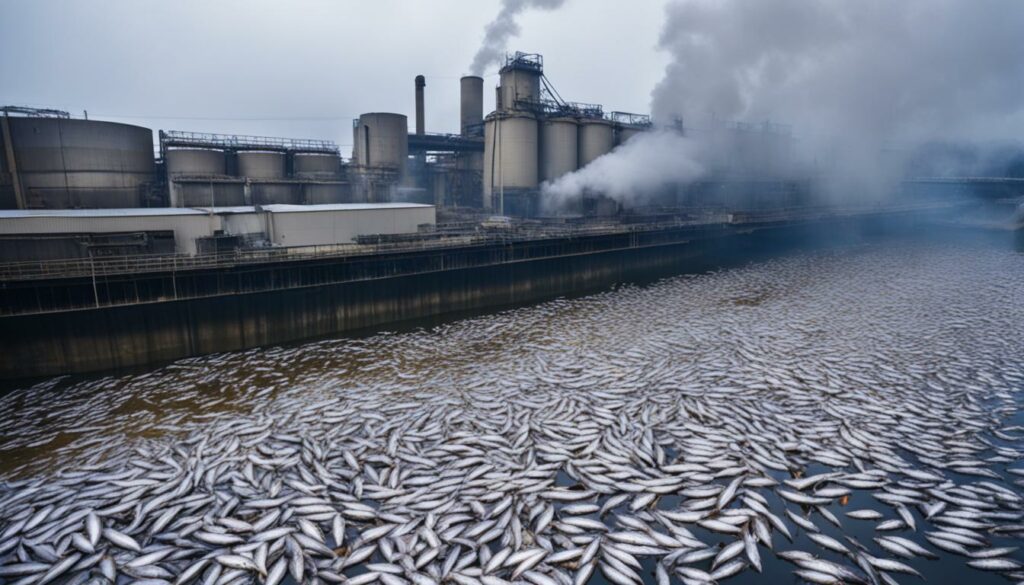
Meeting the WFD’s requirements is hard because of tech challenges and gaps in how things are put into practice. There’s not enough data on new pollutants. Plus, the fast-changing chemical world makes it tough to stay updated. Developing and using new tech is important in controlling pollution. Yet, this often faces delays and costs.
We also need to look at some key stats about pollution control:
| Aspect | Percentage |
|---|---|
| Surface water bodies facing toxic pollution risk | Almost 50% |
| Affected groundwater areas due to diffuse pollution from agriculture | 28% |
| Detected pesticides above concern thresholds in surface water sites (2020) | 22% |
| Monitoring sites showing exceedances of thresholds in groundwater (2013-2020) | 4% to 11% |
These numbers show how big the issue is. The WFD aims to reduce and stop the use of priority substances over 20 years. It shows how important pollution control is. Currently, 38% of Europe’s surface waters are considered healthy. The EU focuses on using new tech and better strategies. This shows the EU is serious about learning from science and protecting water.
Changes to the WFD aim to make water laws better and up-to-date with today’s ecological issues. They help strengthen EU water policies as we learn more about managing water. Part of this is reviewing what pollutants can harm our water and changing our rules every six years to protect it better. This keeps our water safe for drinking, swimming, and for wildlife.
A 2019 report suggested the water directive could do better in some areas. So now, there are ideas on how to make it work even more effectively. This includes fighting against pollution, spending more money wisely, cutting down on red tape, and using technology better. The aim is to set tougher rules for harmful substances we find in our water, like harmful chemicals and drugs.
Many people think these changes are a good idea. In fact, 69 out of 88 people supported them. This shows a real promise to keep our planet safe and clean. One idea is to keep an eye on dangerous substances, even if we’re still not sure how much is safe. Also, there will be very strict rules for keeping our underground water, the water we drink, super clean.
| Directive | Review Period | Key Provisions |
|---|---|---|
| Water Framework Directive | 6 years for Annex X | List of priority substances in surface waters |
| Environmental Quality Standards Directive | 6 years | Standards for substances of national concern |
| Groundwater Directive | 6 years for Annex I | List of pollutants and standards of EU-wide concern |
The European Green Deal, aiming for zero pollution, pushes these changes. It calls for stricter pollution checks and standards. Plus, the plan is for those who make pollution to pay for its monitoring. This should make our water safer and cleaner for everyone.

The EU Water Framework Directive (WFD) has greatly affected drinking water. Article 7 aims to keep our water clean to prevent health problems. It unites rules for drinking water with other water safety standards.
The WFD was checked in 2019, showing it’s mostly working well but needs to be faster. This led to the 2020 Drinking Water Directive, which makes strict rules for water we drink. It asks countries to watch the water closely and inform the EU about its state every three years.
The WFD works with other rules, such as the Bathing Water Directive, ensuring safe water for different uses. These rules cover everything from tap water to the water we swim in, protecting us and the environment.
There’s also a rule that controls what chemicals can be in our rivers and lakes, keeping our drinking water safe. This supports the Drinking Water Directive in protecting our health.
Dealing with too many fertilisers, the Nitrates Directive shows a joined-up effort to keep water clean. A 2021 report underlined the issue, pushing for better ways to keep our water safe to drink.
All EU countries had to make the Drinking Water Directive a law at the local level by January 12, 2023. The updated rules, starting by the end of 2026, focus on safer materials for water systems. These changes help stop bad substances from getting into our water.
Products that meet these new EU rules get a special stamp. This stamp makes sure water systems are made with high standards. It helps keep our drinking water pure and safe across Europe.
Since March 2024, there’s a new way to measure something called microplastics in water. This shows the EU’s push to keep making our water cleaner, using the best available methods. They aim to always improve the standards for our drinking water.
The EU Water Framework Directive (WFD) lays out plans to manage water pollution from farming and factories. It looks at both widespread and local sources of pollution. The goal is to make water clearer by keeping everyone on track and accountable.
Farm runoff is a main reason for water pollution. It carries too many nitrates, pesticides, and similar stuff. These need careful watching and controlling under the WFD. The directive and the EQSD require checking and updating substances that need focus. This keeps pollution under control.
The Nitrates Directive helps reduce this farm pollution. But there were still big issues highlighted in 2019. This shows we need better teamwork between farm rules and water quality guidelines. We must act fast with voluntary plans and tech ideas to stop water damage.
Factories and other industries are another key area of pollution focus. They must manage their wastewater to stop hurting the water. The Urban Waste Water Treatment Directive helps make sure urban wastewater is treated well before getting back into the environment. This makes a big positive impact on water purity.
The EQS ensures countries follow specific checks and reporting on pollution. It makes sure pollution from specific sources, like factories, is well-controlled. This is all in line with the WFD’s aims to manage pollution from all sources effectively.
| Source of Pollution | Directive | Main Focus |
|---|---|---|
| Agricultural Runoff | Nitrates Directive | Reduction of nitrates and pollutants |
| Industrial Discharge | Urban Waste Water Treatment Directive | Management and treatment of wastewater |
| Overall Water Quality | Environmental Quality Standards Directive | Setting pollutant concentration limits |
Efforts to make sure water pollution is under control are ongoing. The WFD updates now and then to keep the focus strong. Its aim is to keep our waters chemically and ecologically sound. This big step helps protect water across Europe for a sustainable future.
Climate change is showing its impact on our water. This is pushing us to change how we manage water. The Water Framework Directive (WFD) in Europe is leading this change. It aims to make our water plans focus more on dealing with climate changes to keep water resources strong.
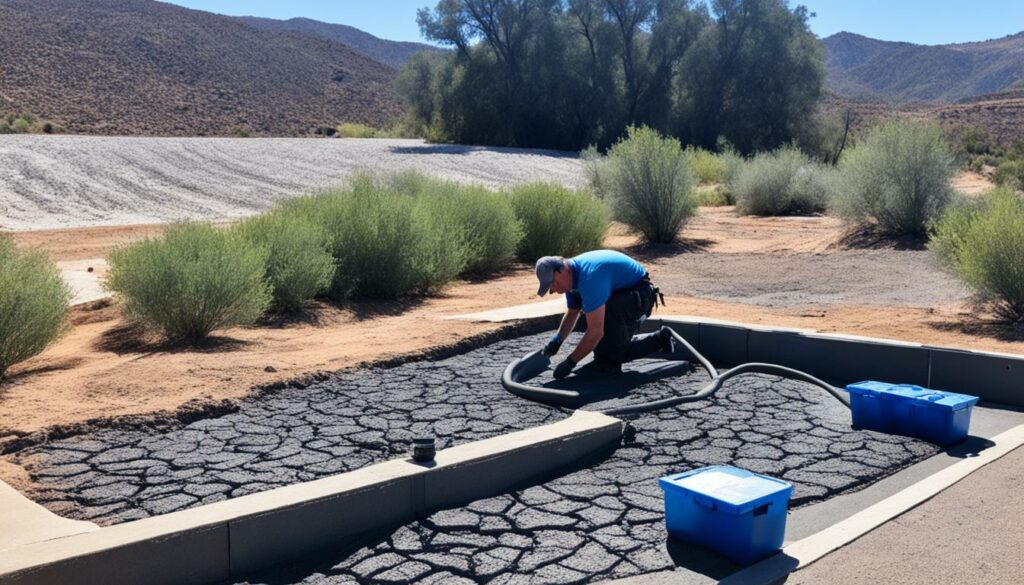
Extreme weather like heavy rains and droughts are on the rise. This means old ways of handling water won’t work anymore. Now, the goal is to adapt to these changes by focusing on preserving water’s quality and its resilience. This calls for better predictions on water quality. It also needs smart ways to manage water shortages.
Predictive modelling is key to staying ahead of water quality issues. It helps water managers see what’s coming. This allows them to plan ahead and stay ready for changing conditions. Such preparation is vital for making sure the WFD stays effective against climate change.
Because of these predictive tools, we must keep updating our strategies. Using these models makes us ready rather than just reacting to problems. This can mark the start of Europe’s stronger water management.
| Year | Event | Impact |
|---|---|---|
| 2018 | Low Water Levels in Rhine | Severe impact on inland navigation and industries like manufacturing, chemicals, and power |
| 2022 | Low Water Levels in Rhine | Similar disruptions as 2018, highlighting recurring vulnerabilities |
| 2023 | Low Water Levels in Rhine | Continued industrial challenges, showing the need for smart management |
The noted events stress the need for water management that looks ahead. The WFD is focusing on these proactive and adaptable methods. It’s clear it’s serious about protecting Europe’s water for the future.
Chemical footprints are key under the EU Water Framework Directive. They focus on how to handle dangerous pollution, looking at many compounds rather than just one. It’s crucial to note the importance of keeping our nature clean to dilute and manage these chemical loads.
There are over 100,000 chemicals registered in the EU, and 30,000 to 70,000 are used daily. Sadly, almost half of the water in Europe is at risk from toxic pollution. We’ve found that normal Environmental Quality Standards (EQS) aren’t enough to deal with mixtures of these chemicals. This makes it important to set standards that consider different chemicals together.
Under the Water Framework Directive, we’re working to reduce the most dangerous chemicals within 20 years. We’ve also created a Watch List for new toxins to improve our monitoring. This helps us focus on the chemicals that need our immediate attention.
The EU is tackling a huge task: reducing our exposure to harmful mixtures. Doing this means looking at the whole picture and across Europe, not just in small areas. It’s hard work, but it’s essential for protecting our environment.
| Statistic | Detail |
|---|---|
| Registered Chemicals | Over 100,000 |
| Daily Use | 30,000 to 70,000 |
| Risk Status | 50% of water bodies at substantial risk |
| Detected Chemicals in Water Samples | 504 out of 610 |
| Max Substances in Danube Water | 241 chemicals |
We must act quickly to improve our water standards and how we monitor them. This effort underscores the EU’s dedication to fighting chemical pollution with new tactics and strong rules to lower our chemical footprints together.
The Water Framework Directive monitoring is key in the EU’s water management. It focuses on keeping our water clean. There are over 146,500 surface water bodies and 15,000 groundwater bodies in the EU and Norway. The WFD makes sure these waters are checked carefully for their health and chemical make-up.
Every six years, detailed plans for each river basin are reported. The last update was in 2016, with the next in 2022. These plans aim to reach good health for our waters. They cover areas like the water’s ecology, chemistry, and amount. This is important for keeping the EU’s water standards high.

Being clear about the environment is crucial under the WFD. It helps everyone involved understand. This includes governments, researchers, and the public. Sharing data helps keep track of how well the WFD is working. It shows where we can do better.
The WFD measures how healthy our waters are by looking at many things. It includes different types of plants and animals living in the water, like fish. It also checks the physical and chemical parts of the water. This makes sure the water is safe for the creatures that live there and for people.
There’s also a focus on the water we can’t see, like groundwater. Making sure the chemicals in it are not harmful is a big goal. This prevents harm to above-ground water and the land around it. It’s also about not using too much water. This way, the land near the water doesn’t suffer.
The EU is serious about looking after our water, as shown by updates to the Drinking Water Directive in 2020. All member nations should follow these updates by January 2023. The new rules include checking for harmful compounds and tiny plastics in our water. They make sure our water management is clear and works well.
Looking back at what the EU Water Framework Directive (WFD) has achieved, it’s clear the law has had a big impact on how we manage and protect water across Europe. The WFD encourages better care for water by pushing for sustainable practices. This has led to healthier aquatic ecosystems. A key report on the WFD’s influence shows that it has lifted up water body protection and the management of flood risks significantly.
But there are still hurdles to overcome, especially in using the directives better and fighting chemical pollution. A review in December 2019 highlighted the necessity for more money, simpler ways of working, and digital updates. It’s also vital to connect the water rules with other policies for a complete water strategy. The plan to change water laws in October 2022 is a step towards tougher actions. This includes checking more types of pollution in the water.
Keeping water quality high remains a key goal. Countries in the EU must check and improve their lists of harmful substances every six years. This is to match the rules in the Environmental Quality Standards Directive. This flexible method helps manage Europe’s water the best way, keeping it safe from new dangers. The WFD is strong but always in a state of tweaking. This makes it even more essential for good environment policy.
The EU Water Framework Directive (WFD) is key in European water policy. It aims to protect and manage freshwater well. It wants water to have good quality ecologically and chemically.
Managing River Basin Plans (RBMPs) is important. It helps bring together the protection, use, and care for water in specific areas. This way, water is managed, looking at the whole picture of each river area.
Environmental Quality Standards (EQS) show the safe levels of pollutants in water across Europe. They help see if water is at the ‘good status’ goal. They are important for checking water quality over time.
The Groundwater Directive (GWD) adds to the WFD by watching over groundwater pollution. It aims to stop pollution and keep groundwater safe. This is critical for protecting this key water source.
The WFD mixes eco-friendly ways with usual water use. This lessens the negative impact on our waters. It helps with sustainable living and keeps the environment healthy.
The 2019 check found the WFD to be essential for its work but needing some updates. It wants to meet its goals better. Plus, it calls for more control over chemical pollution and wider policy harmony. This will take big effort and commitment to fix.
Stopping chemical pollution is hard due to tech limits and gaps in applying rules. The WFD updates what chemicals to focus on to fight pollution better. But we still need to keep pushing ahead and investing in greener tech.
The WFD aims to stop water sources that we drink from getting polluted. This means less hazardous chemicals and pesticides in our water. It boosts the safety of our drinking water and health across Europe.
The WFD has plans to tackle pollution from farms and factories. It sets clear goals and ways to reduce harmful substances in water. This makes sure we can see how well the water is being protected.
The WFD wants us to be ready for how climate change will affect water. It uses models to predict water quality changes. This helps us adjust our plans to keep water and its life safe as the climate changes.
Chemical footprints look at what’s needed to keep our environment healthy from harmful chemicals. It’s about handling mixtures of chemicals, aiming for less toxic pollution. This way, we protect the natural world.
The WFD says we need lots of monitoring and sharing data on water quality around Europe. Sharing this info helps everyone stay involved and understand the progress. It’s crucial for making sure the directive does its job well.